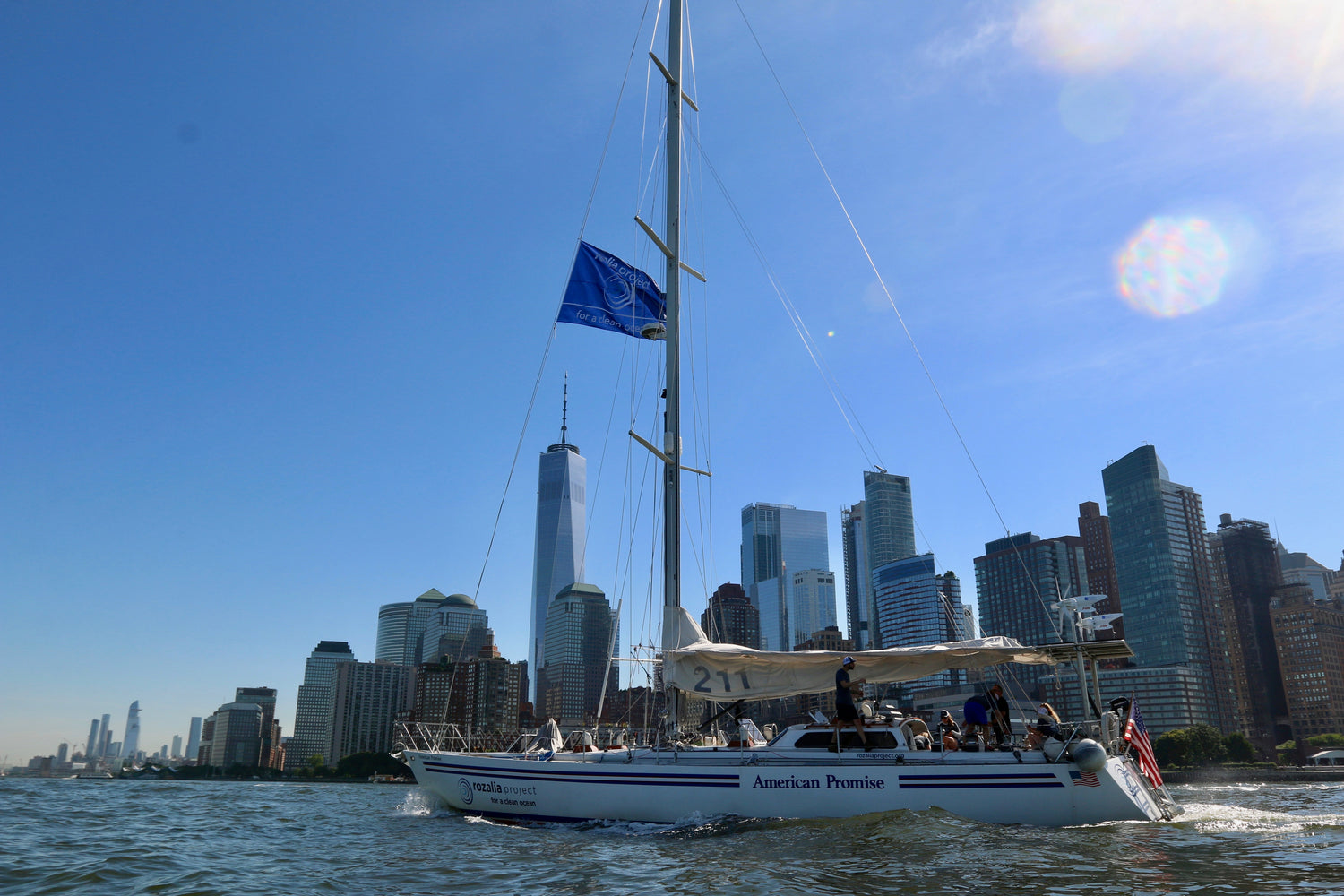CSI for the Ocean

Changing the course of microfiber research
Since 2016, Rozalia Project Founder, Rachael Miller, and her team have been using ship-based expeditions to study microplastic and microfiber pollution, refine methods that make this science accessible and use the data to support the development and deployment of solutions.
In 2018, Professor Claire Gwinnett, an award-winning forensic scientist from Staffordshire University who recognized that methods used in forensic science could be brought to marine science, contacted Rachael sparking an incredible partnership and planting the seeds of CSI for the Ocean.
The program born from that collaboration is CSI for the Ocean a global citizen science microplastic mapping and monitoring program using accessible methods inspired by forensic science.

Remote, global expeditions and great partners
The current phase of CSI for the Ocean includes a spectacular partnership with Lindblad Expedtions - National Geographic that invites Rachael onboard their ships to access some of the most remote and precious places on our planet; from Svalbard and the Arctic pack ice to the Falkland Islands, South Georgia and Antarctica among penguin colonies.
At the same time of Rachael's remote air and water sample collection, the same CSI for the Ocean mentods are being implemented by partner schools and organizations to understand and monitor local microplastic and microfiber pollution.
-

Southern Ocean 2023
Experience the Southern OceanIn a joyous opportunity, Brooke Winslow and I were invited to be the Visiting Scientists on a LEX-NG expedition to the Falkland Islands, South Georgia, and the Antarctica Peninsula in the fall of 2023. This was all of my penguin, big ice and explorer dreams coming true and more. It is unfortunate, but expected that there was microplastic/anthropogenic microfiber in both the air and water.
-

Arctic-Norway 2023
Follow the Arctic JourneyIn her our expedition as LEX-NG Visiting Scientists, I traveled with Brooke Winslow to Svalbard and got our first experiences with sea ice, blue whales, belugas and walrus!
At every stop of the expedition, we collected air and water samples with the help of the onboard guests, with some very interesting results!
-

Hawaiian Archipelago 2022
Source or Sink? Read the ResultsIn 2022, I put together a team of National Geographic Explorers to join forces onboard Bob Ballard and Ocean Exploration Trust's E/V Nautilus. Our work examined if Hawaii is a source or sink of micro debris the same way visible debris from the North Pacific Gyre is deposited on the windward shores.

The next stage of CSI for the Ocean is in development
There is a great need for a lot of microfiber data in the next five years in order to push forward solutions from policy makers, washing machine manufacturers and textile industries. In order to make this possible, National Geographic Society has funded the development of an app that will close the remaining gap: fiber analysis. Once this app has been trained, tested and made available to the public, anyone on the planet will be able to contribute a meaningful and impactful dataset that would be otherwise unobtainable.


